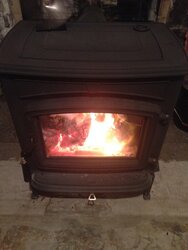F55 Owners, Step Inside
- Thread starter cuttingedge
- Start date
-
Active since 1995, Hearth.com is THE place on the internet for free information and advice about wood stoves, pellet stoves and other energy saving equipment.
We strive to provide opinions, articles, discussions and history related to Hearth Products and in a more general sense, energy issues.
We promote the EFFICIENT, RESPONSIBLE, CLEAN and SAFE use of all fuels, whether renewable or fossil.
You are using an out of date browser. It may not display this or other websites correctly.
You should upgrade or use an alternative browser.
You should upgrade or use an alternative browser.
I've been doing some experimenting the last few days. I've noticed that just about every time I filled the stove, the temps would get up to 600-700 even when closing down the primary air at 400 degrees. so every time I would hit the 650 mark, I would put a magnet over the entire secondary inlet and the fire would then settle down in the 500-600 temp range. I know that 700 is within the manufactures optimum burn temps but I would rather not flirt with possibly overfiring the stove.
so instead of baby sitting the stove and waiting to see if i had to put the magnet on, I have been just leaving the magnet on all the time now. I was able to find a fridge magnet that was just a little longer and wider than the inlet opening. I just peeled off the paper advertisement on the one side and got off all the residual glue.
I have not noticed any ill effects when running the stove this way and I've found that the stove is more manageable now. I have a very good draft so this is my way of slowing that down.
if I close the primary air down at around 400 degrees (not straight from totally open to totally closed but closing in increments), I've noticed that the stove does not get much higher than 500 degrees. obviously if I wait longer to close it down, the stove temps will go higher which is needed in the single and below 0 temps we have been having. so far doing it this way, the stove is easier to run and I don't have to worry much about getting too hot.
so these are just my experiences. I'm sure others will not have to do this but if you have a real good draft and need to slow things down, this is a very good option. oh, I've got an approximate 22 foot interior chimney using an unlined stainless flex liner.
so instead of baby sitting the stove and waiting to see if i had to put the magnet on, I have been just leaving the magnet on all the time now. I was able to find a fridge magnet that was just a little longer and wider than the inlet opening. I just peeled off the paper advertisement on the one side and got off all the residual glue.
I have not noticed any ill effects when running the stove this way and I've found that the stove is more manageable now. I have a very good draft so this is my way of slowing that down.
if I close the primary air down at around 400 degrees (not straight from totally open to totally closed but closing in increments), I've noticed that the stove does not get much higher than 500 degrees. obviously if I wait longer to close it down, the stove temps will go higher which is needed in the single and below 0 temps we have been having. so far doing it this way, the stove is easier to run and I don't have to worry much about getting too hot.
so these are just my experiences. I'm sure others will not have to do this but if you have a real good draft and need to slow things down, this is a very good option. oh, I've got an approximate 22 foot interior chimney using an unlined stainless flex liner.
I don't think this is a good option. Putting a magnet fully over the secondary port is a poor solution. It defeats the clean burning of the stove and decreases efficiency by letting more unburnt gases go up the flue. Don't be a slave to the thermometer. Go more visually. If the fire is burning strongly, start closing down the primary air sooner say at 300F and a bit more aggressively. Consider burning larger splits to help slow down the fire a bit.
Last edited:
I don't think this is a good option. Putting a magnet fully over the secondary port is a poor solution. It defeats the clean burning of the stove and decreases efficiency by letting more unburnt gases go up the flue. Don't be a slave to the thermometer. Go more visually. If the fire is burning strongly, start closing down the primary air sooner say at 300F and a bit more aggressively. Consider burning larger splits to help slow down the fire a bit.
I still have good secondary flames when its fully covered so I figured the gases were being burnt. I'm still learning how this stove operates so i'll experiment some more with only a portion of the inlet covered.
Try shutting down the air sooner and burning larger splits. You might also try to find the boost air supply to the stove if there is one and close that off with a magnet instead. This will take a hand mirror and a flashlight to examine the underside of the stove and locate air intake(s).
Try shutting down the air sooner and burning larger splits. You might also try to find the boost air supply to the stove if there is one and close that off with a magnet instead. This will take a hand mirror and a flashlight to examine the underside of the stove and locate air intake(s).
well the split sizes are what they are. I've got about 13 cords split and stacked that range from 3-6 inches. now that I have a bigger stove, i'll make them on the larger size. I'm not sure what you mean about the boost air supply. on the bottom, I believe all I have is the primary air inlet and the unrestricted secondary air inlet. I do not see any other ports under there. I just noticed that there are two squares for the primary air inlet. when all the way closed, the square on the left stays open about a quarter of an inch. the one on the right closes all the way. here are some pictures. picture of the secondary, I have about an inch that's not covered by the magnet.
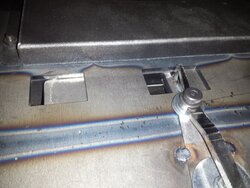
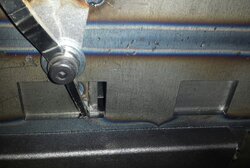
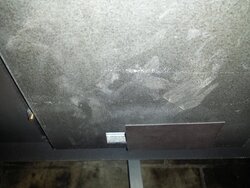
Last edited by a moderator:
jeffesonm
Minister of Fire
I switched from an Osburn Matrix (flush insert, 2.4? cu ft firebox) to the F55. Whereas as the Matrix would be good down to the low 30's, the F55 is good into the mid 20's maybe? Just a guess really. It definitely puts out a bit more heat, but I don't think the difference is dramatic. More noticeable is not having the fan run all the time, but hard to say if it's worth the $ to upgrade just for that. I really liked the Matrix, got similar burn times and preferred its looks to the F55. I suspect one day I'll install a wood boiler and go back to it.I have been looking at changing from an Insert to the F55 and was curious if others with this stove had done the same. Currently burn with a Jotul Rockland 550 (3 cubic foot firebox) rated at 1,800 square feet and 65,000 btu’s.
It seems the F55 is super easy to use, puts out a ton of heat and nearly everybody is incredibly pleased with the stove.
Again interested if others had switched from an Insert to this particular wood stove and if they could offer any feedback. I am not disappointed with the Rockland (it does what it is rated to do) but it really struggles in my center chimney 2,500 square foot home when the temps get below 30.
To be honest the biggest comfort trick I figured out this year is to buy a programmable thermostat and just let the boiler run for a bit once a day when it gets super cold out. I have the thermostats programmed to jump from 55 to 75 for an hour in the morning, starting just before I wake up. This amounts to the boiler running flat out for about an hour, with a .65 gph nozzle burns like $1.50 worth of oil. However in that hour it raises the whole house probably 6 or 7 degrees which seriously takes the chill off and then the stove can keep if comfortable burning throughout the day. It takes a lot more BTUs to raise the temp of your house than it does to just maintain it.
I spent an inordinate effort trying to chase that list bit of oil (recently bought, installed, and am now selling a second stove) but for $150 or so a year I will just burn a bit and be comfortable.
That's good news. It looks like there is some secondary air coming in. That is also good, don't block it off entirely. Split a good portion of the next batch of wood to 6"-8" splits and that will also slow down the fire and increase burn times.Just did another full load, closed down early and it topped out at 550 or so. I guess I was letting it get to hot before closing down.
before I went to bed last night, I filled the stove again and turned it down quickly. so for me and my setup, I have to turn it down to the point where secondary flames are just barely showing and still doing that, the stove still went up to 575. I came down this morning, 8 hours later and the stove top was just under 300 and there was lots of formed coals in the back. I opened the air up, raked forward, threw a log and up to 400 she went. just threw another log on to burn the remaining coals down and the next load is going in after that. kind of a balmy day out already at 27 degrees. hope to see some warmer temps this week so we can get rid of some of this snow. I can't wait for spring!
Holzstapel
Burning Hunk
Starting from an overnight burn with coals in the morning I start shutting the air down when the flue temp gets to about 450. It gets there fast once everything is going with the air fully open. The stove might still be in the 300s and slowly climbing, but if I leave the air fully open, the flue will easily shoot above 550 and head into the red. If I cut the air back to 50% when the flue hits 450, it will slow down and hover around 500-550 and then the stove will start to get warmer. Now is when I keep an eye on the flue temp, the stove temp and fire. When the stove gets close to 500, I cut the air back a little more and it slows the fire down. I think the hottest the stove got this weekend was about 550-575.
Should I keep doing what im doing in regards to the flue temp? The max flue temp this weekend was near 525 on the thermometer, which is located just before the 90* turn into my chimney - roughly 18" above the stove. It hit this temp during a small reload when I left the air open a little too much. It smelled a little like the paint was curing, but as soon as I turned the air down, the flue temp leveled out.
Most of the wood I burned this weekend was red oak in rather small splits (3-5"). It has been CSS since before Sandy and burns really nice - I just wish the splits were larger.
Edit - after looking at the photo I posted of my flue thermometer, I was mistaken on the flue temp I hit over the weekend. No way was it nearing 600 - more like 525 - juuuuuuust into the red.
Should I keep doing what im doing in regards to the flue temp? The max flue temp this weekend was near 525 on the thermometer, which is located just before the 90* turn into my chimney - roughly 18" above the stove. It hit this temp during a small reload when I left the air open a little too much. It smelled a little like the paint was curing, but as soon as I turned the air down, the flue temp leveled out.
Most of the wood I burned this weekend was red oak in rather small splits (3-5"). It has been CSS since before Sandy and burns really nice - I just wish the splits were larger.
Edit - after looking at the photo I posted of my flue thermometer, I was mistaken on the flue temp I hit over the weekend. No way was it nearing 600 - more like 525 - juuuuuuust into the red.
Last edited:
ToltingColtAcres
Member
but if I leave the air fully open, the flue will easily shoot above 550 and head into the red
What type of flue temperature gauge are you using? I don't "hit the red" until 900 degrees, which I'm completely comfortable with, as my Metalbestos Class A chimney is rated above that, and my Selkirk double-wall stove pipe is rated for 1000 degrees.
Holzstapel
Burning Hunk
What type of flue temperature gauge are you using? I don't "hit the red" until 900 degrees, which I'm completely comfortable with, as my Metalbestos Class A chimney is rated above that, and my Selkirk double-wall stove pipe is rated for 1000 degrees.
This one right here. In this photo it was mounted about 8-9" above the stove it has since been relocated.
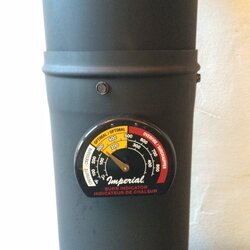
Grisu
Minister of Fire
Should I keep doing what im doing in regards to the flue temp? The max flue temp this weekend was near 600 on the thermometer, which is located just before the 90* turn into my chimney - roughly 18" above the stove. It hit this temp during a small reload when I left the air open a little too much. It smelled a little like the paint was curing, but as soon as I turned the air down, the flue temp leveled out.
I assume that is an outside flue thermometer on a single wall pipe? Internal temp will be 1.5x to 2x as much which brings you at or slightly above the recommended max of 900 F. For a short time, probably no harm was done. Still, I would try to cut down the air a bit sooner/more aggressively.
What type of flue temperature gauge are you using? I don't "hit the red" until 900 degrees, which I'm completely comfortable with, as my Metalbestos Class A chimney is rated above that, and my Selkirk double-wall stove pipe is rated for 1000 degrees.
Are those internal temps?
ToltingColtAcres
Member
Are those internal temps?
Yes, I have a flue thermometer with a probe (google flue-gard probe), so it measures the inside temperature. With double-walled stove pipe I wouldn't even want to try and guess using a magnet-type thermometer mounted to the pipe.
Holzstapel
Burning Hunk
I assume that is an outside flue thermometer on a single wall pipe? Internal temp will be 1.5x to 2x as much which brings you at or slightly above the recommended max of 900 F. For a short time, probably no harm was done. Still, I would try to cut down the air a bit sooner/more aggressively.
Roger. Thanks for the information - good to know!
Edit - after looking at the photo I posted of my flue thermometer, I was mistaken on the flue temp I hit over the weekend. No way was it nearing 600 - more like 525 - juuuuuuust into the red.
Last edited:
I know this might be getting off topic but can someone take a measurement for me? Anyone who has a rear vent into a Tee what is the height of the tee where it connects to the liner.
Thank you
the stove is still pretty hot but the best I could measure is just over 32 inches. I don't know if every tee is made the same but that's to the top of the solid part for a forever flex tee. hope this helps
I'm not sure if the warmer temps (mid to high 20's and into the low 30's) has anything to do with it but I seem to have more control over the stove now. This is with no restriction on the secondary air inlet. After I close it down, the temps don't go as high anymore. Which is nice since I don't need to get the house as warm.
It's currently 31 and slowly getting warmer. I just filled the stove and closed it down for the night. Stove top temps are around 350.
We'll see how hot it gets in the morning when I get up. My guess is that it won't be over 500.
It's currently 31 and slowly getting warmer. I just filled the stove and closed it down for the night. Stove top temps are around 350.
We'll see how hot it gets in the morning when I get up. My guess is that it won't be over 500.
i came down at 530am and the stove was at 250 degrees. there was still a lot of hot coals in the back so i just raked forward and got it back up to temp pretty quick before i had to leave. it had topped out at 450 last night.
iluvjazznjava
Member
Last edited by a moderator:
Holzstapel
Burning Hunk
Yesterday I loaded the stove up at 5:15 am and did not return to the house until 7:15pm. 14 hours and still enough coals to get the fire ripping in a matter of minutes. I really like that.
Similar threads
- Replies
- 18
- Views
- 1K
- Replies
- 42
- Views
- 4K
- Replies
- 21
- Views
- 1K
- Replies
- 47
- Views
- 3K


